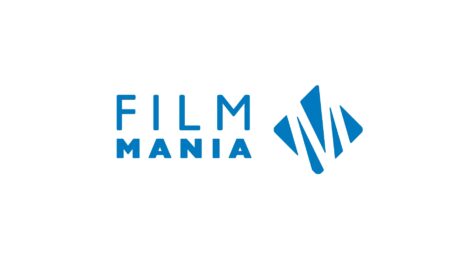Higher vision
HD is now very much a mainstream format, but are channel and content providers ready to switch on to an all-HD future? Anna Tobin reports.
 The scene is set for HD to take over the world. On the production side, the technology is readily available and stores are stocked with HD-ready TV sets. The question is, are all the players involved ready to wind up SD and fully commit to HD? And are SD viewers willing to pay a supplement for it, by upgrading their TV or decoder or increasing their pay TV subscription charge?
The scene is set for HD to take over the world. On the production side, the technology is readily available and stores are stocked with HD-ready TV sets. The question is, are all the players involved ready to wind up SD and fully commit to HD? And are SD viewers willing to pay a supplement for it, by upgrading their TV or decoder or increasing their pay TV subscription charge?
This is certainly a conversation that channel operators who are fully committed to HD have been having. “For us there is a strong case for a full migration of our channel portfolio to HD,” says John Honeycutt, executive vice-president, international business operations at Discovery Networks International. “On our production side most of what we produce is already largely done in HD and we’re continuing to grow our HD distribution. We first launched HD in the US in 2002 and now Discovery HD is in over 60 markets around the world. Being quick to market has been a great strategic advantage for us.”
BSkyB in the UK is also reaping the rewards of being an early adopter. It is widely acknowledged as the global leader in the HD marketplace. In PAL territories, such as the UK, the SD signal is already pretty good quality, compared with the signal in NTSC territories, so Sky has set the standards bar for the HD programming it transmits very high in order that the difference between SD and HD is noticeable to its viewers.
“Sky has incredibly high standards for HD,” reiterates Christian Murphy, vice-president, international, AETN. “It is tough for us, but also great for us as these are the standards that we now set for all our HD content. They are also applying the similarly high standards for 3D, so again there is a lot to strive for.”
Sky has opted for quantity as well as quality with 50-plus HD channels in its offering. By creating the demand it has put an extra pressure on channel operators to move over to HD. “In markets, such as the UK, where the SD signal is already very good you need to be able to offer not just one HD channel, but dozens, so that people notice the key differences.” says Niall Duffy, managing director of media technology consultants Mediasmiths.
The number of HD channels being transmitted across the continent has multiplied in the last few years. “According to the MAVISE database and the European Audiovisual Observatory at the end of 2010 there were 414 HD channels available across the EU, up from 274 channels in 2009. That shows there is still a high demand for quality HD content and good growth potential for channel providers and clients,” says Bhavneet Singh, managing director and executive vice-president, emerging markets, MTV Networks International (MTVNI).
However, Singh notes that within Europe there are pockets of particularly rapid growth. “Various markets are at different stages of the HD development cycle. France, Holland, Poland, Spain and the UK are at the forefront, whilst, in Germany, Hungary and Russia we even see dedicated HD satellite platforms,” he says.
Additional revenue
There is no doubt that platform operators view HD as an audience draw, particularly in highly competitive pay markets. Rob Webster, commercial director of Sky in the UK, says: “We have more than 3.5 million HD customers, a number which has grown by 1.5 million in just 12 months. Each of these Sky homes is paying a dedicated monthly subscription, which is generating additional revenue of more than £400 million. Given the appetite from consumers for HD TV and the proven revenue-generating model that’s in place, there is, therefore, a strong commercial case for channel providers to launch in HD. It’s no coincidence that 48 out of the 53 HD channels available on Sky are from pay TV providers: it makes sense for broadcasters to embrace this commercial opportunity.”
Some HD channels, however, particularly from public service broadcasters, such as the UK’s BBC1 HD, are offered free-to-air and in some markets pay HD channels are offered at no extra cost as part of a standard package. The business model is still being worked out. “Due to quality content and the investments behind the technology, HD channelsused to be included in premium digital packages. Recently, we have been observing HD moving to the mainstream of the TV offering. We reckon that this trend will continue especially in the light of more precise telemetry monitoring of the HD viewing,” says Singh at MTVNI.
Caleb Weinstein, Discovery Networks senior vice-president and general manager, distribution, and acting general manager, emerging business, believes that the packaging model of HD is dependent on where the operators are in the HD life cycle. “What is apparent is that operators consistently see HD as an ARPU driver and are using their investments in HD bandwidth and equipment as a way to distinguish pay TV from free and a way to raise additional RGUs [revenue generating units] from their customer base.”
There is a long way to go before HD rules however. “Even in a real leadership market, such as the UK, HD doesn’t dominate,” points out AETN’s Murphy. “Maybe Italy is catching up with the UK with its HD channel offering, but with other markets in Europe it’s going to be three to five years plus before they reach similar channel levels. And you also need HD TV sets to be moving into homes, flat screens were launched only a few years ago, but there are still a lot of ‘square box’ TVs out there. It’s not time to say goodbye to SD yet. What you will see more of though is content being uplinked in HD and then down converted for SD playout.”
[icitspot id=”9169″ template=”box-story”]
While demand for HD programming could bring faster returns for content providers (although extra production costs still have to be taken into account), for channel providers additional revenue is hard to find. “HD is no longer seen as a premium product per se and so additional revenue opportunities are limited,” explains Louise Cottrell, vice-president affiliate sales, Chello Zone. “That said, operators are looking for HD channels generally and that is where their budgets are focused, so there are still additional commercial deals potentially available. We are discussing new deals for ESC HD as well as Food Network; and rolling out a new HD brand from our portfolio – Outdoor Channel.”
Even when programmers commit to moving over to HD, distribution and transmission still presents some challenges. Factors such as bandwidth, and low HD TV set penetration in emerging markets contribute to the discrepancy in HD take up between different territories. “Consumer adoption and penetration of HD sets varies from economy to economy. We see different distributors using bandwidth in different ways, but our job is to deliver the highest quality imagery for the right economic situation. That is what we commit to do and from a production and infrastructure perspective we think HD is a way of future-proofing ourselves,” says Discovery’s Honeycutt.
Limited satellite capacity is forcing many western European broadcasters to limit their HD ambitions, according to Ian McDonough, senior vice-president and general manager, EMEA, BBC Worldwide Channels. “In western Europe, although HD launches are perceived as highly important, limited capacity is an issue in most countries, meaning that operators have to make some difficult choices about whether to sacrifice channel variety for a larger HD selection,” he says. “While migrating our full channel portfolio offering to HD would be an ideal scenario for us and our viewers, capacity is a limiting factor.”
Channel operators can only do so much, reiterates Cottrell at Chello Zone. “There remain capacity restrictions at the platform operator end and so HD development still tends to be channel by channel, rather than carte blanche across existing portfolios,” she says. “Operators in many cases are focusing on launching HD versions of existing brands and offering simulcast HD/SD channels to subscribers at this stage. We are moving existing brands such as Extreme Sports Channel over to HD later this year and are working on plans to migrate another channel brand to HD in 2012. Newer brands that we have brought to the market, such as Food Network and Outdoor Channel, already have simulcast HD versions available.”
Simulcasting HD and SD is likely to be the way forward for some time, perhaps following the same model as the analogue/digital phase out. “In the past many platforms had an HD showcase channel as content was limited, now we are in a fortune position where we can simulcast channels,” says Dean Possenniskie, AETN’s managing director, Europe.
 Multiple screen challenges
Multiple screen challenges
Trickier waters lie ahead for HD when it comes to delivering images to multiple screens, such as tablets, PCs, mobile phones. Content owners face a battle to retain their copyright and extract value from it. “This is a complex area, regardless of format, due to availability of programme rights by channels and being able to pass these on to the operators for distribution to multiple screens,” says Chello’s Cottrell. “Technology has moved quickly and it is important to control use of content, whilst also working with the operators to support them as they roll out new innovative services to subscribers. Channel providers are working closely with platforms operators to support supply of their channel brands to multiple screens, at this stage mostly in SD, but where HD is technically feasible and content rights are available, then the format, subject always to costs of course, should not make too much of a difference.”
Getting your content to go further and have a life outside the TV screen is obviously attractive to content providers. AETN’s Possenniskie, says: “We have rights for internet, PC and tablets and we’re heavily involved with Sky and Sky Player. The financials might not be there yet, but to be there, to have this accessibility and to have viewership across other platforms is important. We are a content company at heart and it shouldn’t matter too much where our content is viewed.”
It’s when that content ends up somewhere it shouldn’t be, via an over-the-top platform, that its creators start to object. There has until now been an air of complacency about this, but as connected TVs inch their way into the mainstream overlapping over-the-top distributors with mainstream pay-TV distribution, it is likely that there will be a clampdown. Connected TV services delivered over the open internet will soon be able to offer something akin to HD in quality, making the threat even greater. But so far the reality is not living up to the hype.
Discovery’s Honeycutt says: “I’m not impressed so far with what I’ve seen of connected TV. The navigation is often complicated and the buffering is long and I don’t think that there is any great technological reason for this, it’s just that there isn’t enough collaboration between the consumer electronics folk and the distributors.”
HD is caught up in many of the general challenges that currently beset the TV industry. Like the moves from black and white to colour and analogue to digital, the move from SD to HD will be gradual and unpredictable, but it will get there sooner or later and some markets will get there quicker than others.



